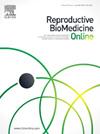The complementary seminovaginal microbiome in health and disease
IF 3.7
2区 医学
Q1 OBSTETRICS & GYNECOLOGY
引用次数: 0
Abstract
Infertility, adverse pregnancy outcomes and genital infections are global concerns. The reproductive tract microbiome appears to play a crucial role in the physiology of both the female and male reproductive tracts. Despite the presence of thousands of microbes in body fluids shared during unprotected sexual intercourse, they have traditionally been studied separately, with greater emphasis on the female (mostly vaginal) microbiome, and the interaction between these microbiomes in a sexually active couple has been overlooked. This review introduces the concept of the ‘seminovaginal microbiome’ – the collective microbiota of both partners, transferred and shared during sexual interaction. By synthesizing the existing body of next-generation sequencing-based literature, this review establishes the first holistic view of how these microbiomes interact, influence reproductive health and affect assisted reproductive technique outcomes, as well as the occurrence of microbe-associated diseases such as sexually transmitted infections, prostatitis, bacterial vaginosis and candidiasis. Additionally, the microbial interplay in homosexual couples and transgender individuals is discussed.
求助全文
约1分钟内获得全文
求助全文
来源期刊

Reproductive biomedicine online
医学-妇产科学
CiteScore
7.20
自引率
7.50%
发文量
391
审稿时长
50 days
期刊介绍:
Reproductive BioMedicine Online covers the formation, growth and differentiation of the human embryo. It is intended to bring to public attention new research on biological and clinical research on human reproduction and the human embryo including relevant studies on animals. It is published by a group of scientists and clinicians working in these fields of study. Its audience comprises researchers, clinicians, practitioners, academics and patients.
Context:
The period of human embryonic growth covered is between the formation of the primordial germ cells in the fetus until mid-pregnancy. High quality research on lower animals is included if it helps to clarify the human situation. Studies progressing to birth and later are published if they have a direct bearing on events in the earlier stages of pregnancy.
 求助内容:
求助内容: 应助结果提醒方式:
应助结果提醒方式:


